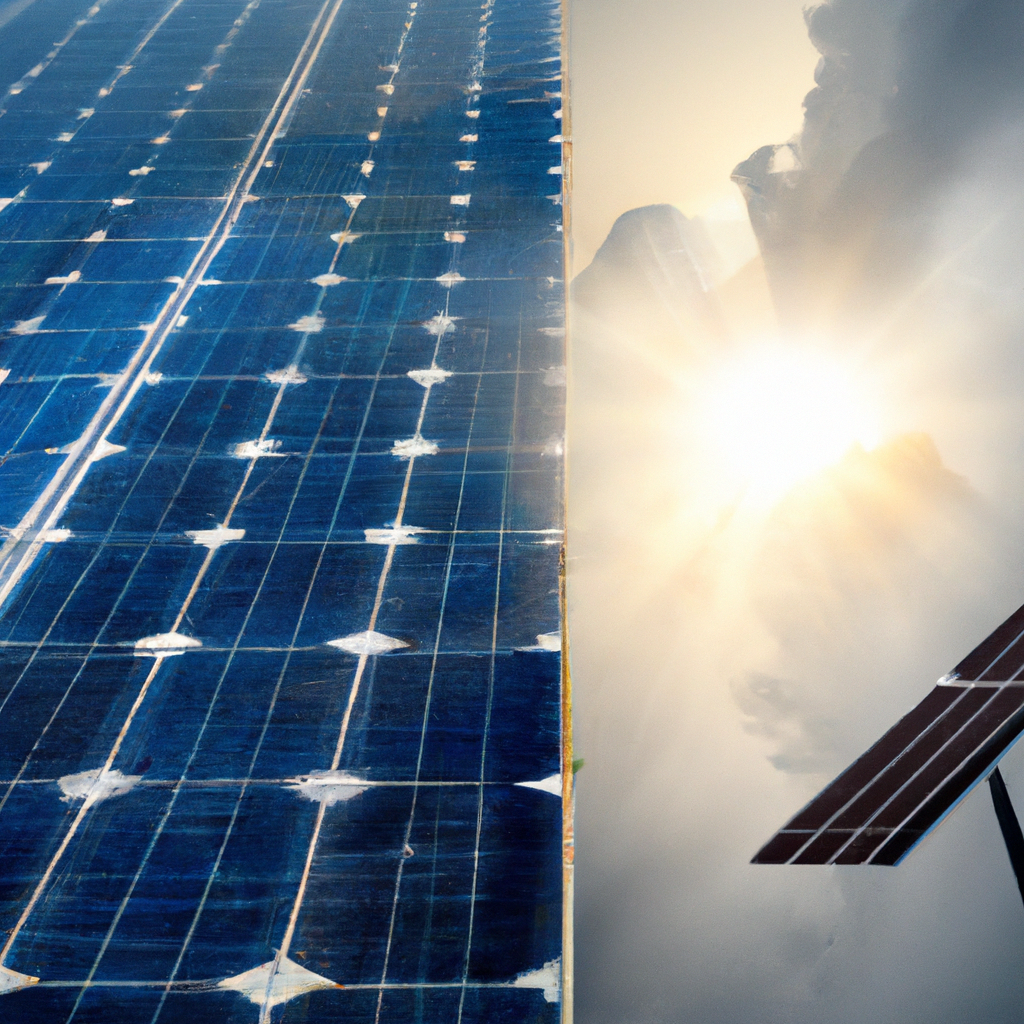In today’s world, where environmental concerns are at the forefront of discussions, the importance of renewable energy sources cannot be overstated. Renewable energy offers a sustainable and clean alternative to traditional fossil fuels, reducing carbon emissions and mitigating the impact of climate change. Solar and wind power are two popular options in the realm of renewable energy, each with its own unique advantages and considerations. In this comprehensive guide, we will delve into the world of solar and wind energy, comparing and contrasting their features, benefits, and suitability for various applications. By the end, you’ll have a clearer understanding of which renewable energy source is right for you.

Harnessing the Power of the Sun: Solar Energy
What is Solar Energy?
Solar energy is the conversion of sunlight into electricity by utilizing solar panels or photovoltaic cells. These panels are composed of multiple solar cells, which absorb sunlight and generate a direct current (DC). This DC is then converted into alternating current (AC) through an inverter, making it compatible with standard electrical systems.
Advantages of Solar Energy
One of the key advantages of solar energy is its abundance. The sun is an inexhaustible source of energy, providing an ample supply of sunlight that can be converted into electricity. Solar energy is also widely accessible, making it suitable for both urban and rural areas. Additionally, solar panels require minimal maintenance, resulting in lower operational costs over time.
Considerations for Solar Energy
While solar energy has numerous benefits, there are a few considerations to keep in mind. The efficiency of solar panels can be affected by factors such as shading, weather conditions, and panel orientation. Additionally, the initial cost of installing solar panels may be relatively high, although this can be offset by long-term savings on electricity bills and potential incentives or tax credits offered by governments.
Harnessing the Power of the Wind: Wind Energy
What is Wind Energy?
Wind energy is harnessed by using wind turbines, which convert the kinetic energy of the wind into electrical energy. As the wind blows, it causes the turbine blades to rotate, driving a generator that produces electricity. Wind turbines can be installed individually or in groups, forming wind farms that generate significant amounts of renewable power.
Advantages of Wind Energy
Wind energy offers several advantages, including its renewable nature and abundance. Wind is a free resource that can be found in various regions, making it accessible to many communities. Wind turbines can generate electricity on both large and small scales, providing flexibility in application. Furthermore, wind energy production does not emit greenhouse gases or contribute to air pollution, making it environmentally friendly.
Considerations for Wind Energy
While wind energy has numerous benefits, there are some considerations to take into account. Wind turbines require consistent wind speeds to generate electricity efficiently, so their effectiveness may vary depending on location. Additionally, wind farms may face challenges related to noise pollution and visual impact, which should be considered when planning installations.
Comparing Solar and Wind Energy
Energy Output
Solar energy systems tend to have a more predictable energy output as they directly rely on sunlight. However, their output is dependent on factors such as geographical location, weather patterns, and shading. Wind energy, on the other hand, is influenced by wind speed and consistency, which can vary throughout the day and seasonally.
Cost-effectiveness
Both solar and wind energy have seen significant cost reductions in recent years. Solar panels have become more affordable due to advancements in technology and mass production. Wind turbines have also become more cost-effective, especially in areas with consistent wind resources. It is essential to consider the specific energy needs of your location to determine the most cost-effective option.
Environmental Impact
Both solar and wind energy have minimal environmental impacts compared to traditional energy sources. Solar energy production does not generate greenhouse gas emissions, while wind energy production is also considered clean and sustainable. By opting for renewable energy, you contribute to reducing carbon emissions and combating climate change.
Application Suitability
The suitability of solar and wind energy depends on various factors, including geographical location, available space, and energy requirements. Solar energy is highly versatile and can be applied to residential, commercial, and utility-scale projects. Wind energy is often more suitable for larger-scale applications, such as wind farms, although smaller turbines can also be utilized.
Conclusion
In the quest for a sustainable future, both solar and wind energy play crucial roles in reducing our reliance on fossil fuels and combating climate change. Solar energy offers the advantages of accessibility, minimal maintenance, and abundant sunlight. Wind energy, on the other hand, capitalizes on the power of wind to generate electricity, with its benefits lying in its renewable nature and scalability. When deciding between solar and wind energy, it is essential to consider factors such as geographical location, available space, energy needs, and budget. Ultimately, the choice between solar and wind energy depends on which source aligns best with your specific requirements and goals. Embracing renewable energy empowers individuals and communities to contribute to a greener and more sustainable future.